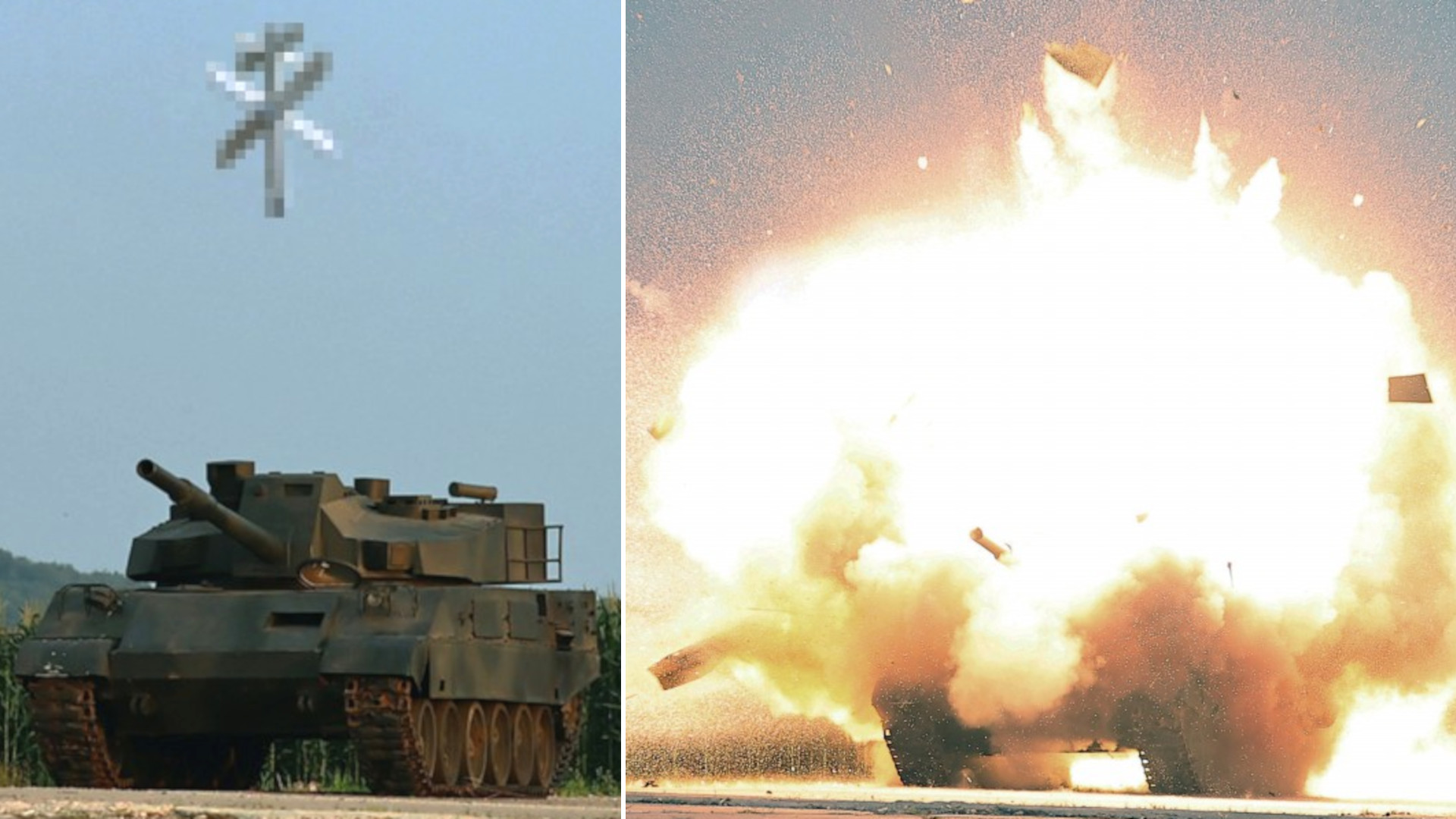North Korea has revealed two new kamikaze drones that look to be virtual copies, at least externally, of the Israeli-made Harop and Hero-400. Though the exact capabilities of the North Korean designs are unclear, munitions like this would be very relevant in any future conflict on the Korean Peninsula and are something that Pyongyang could make available for export, including to Russia.
North Korean state media released pictures today of the kamikaze drone designs, also known as loitering munitions, which it does not name, following a visit by the country’s leader Kim Jong Un to the Drone Institute of the Academy of Defence Sciences on August 24. Though the uncrewed systems are blurred out in the images, their general outward appearance is clear.
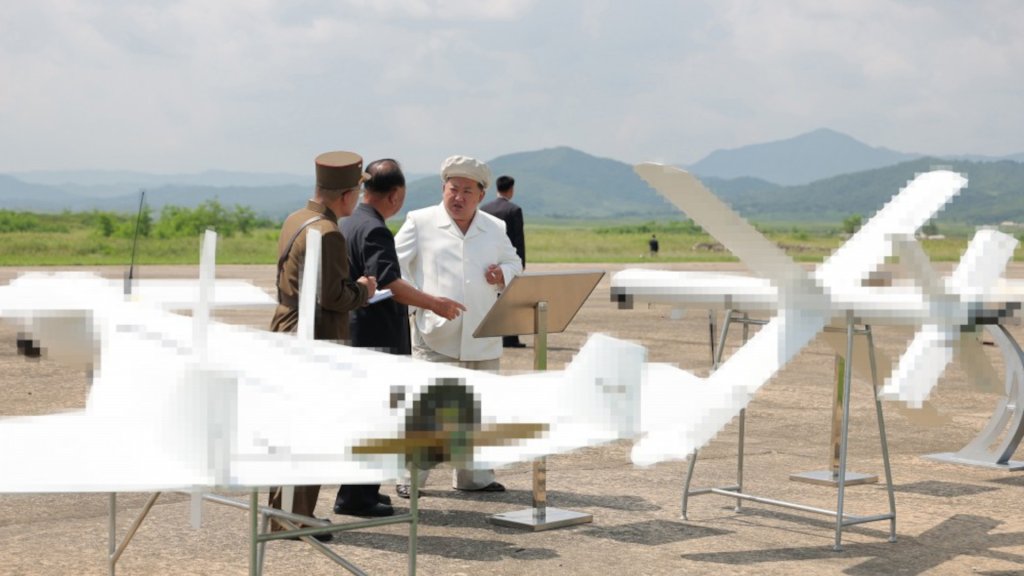
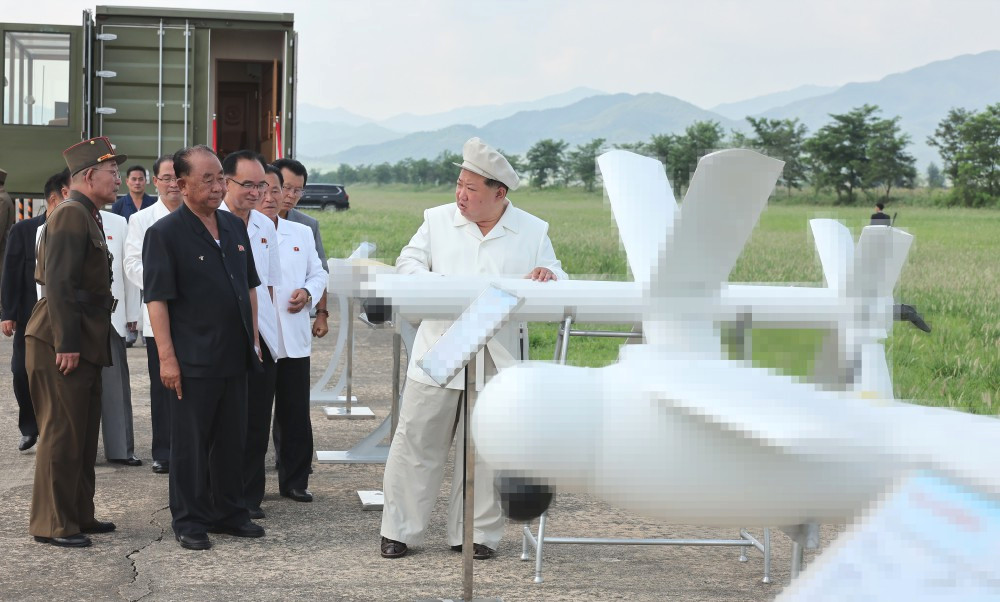
One of the new North Korean designs is virtually identical visually to the Harop from Israel Aerospace Industries (IAI) down to its delta-wing platform with canards at the front and vertical stabilizers at the rear. The combat-proven Harop, as well as its predecessor Harpy, was originally designed primarily to seek out enemy air radars in the suppression and destruction of enemy air defense (SEAD/DEAD) role.
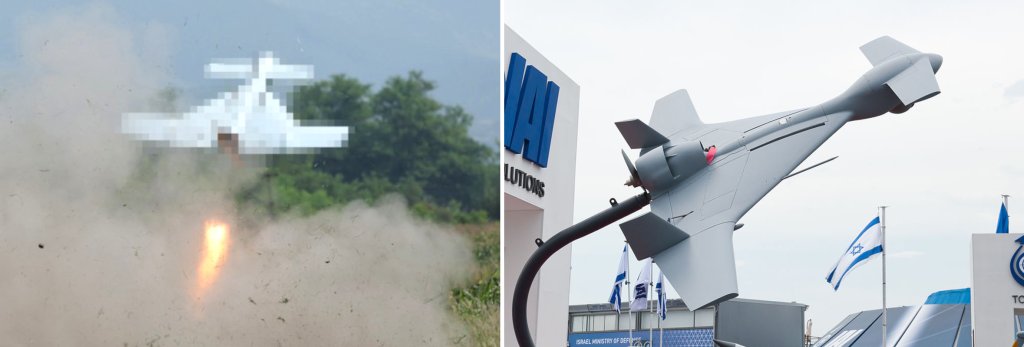
However, Harop has the ability to engage a much wider array of targets than Harpy. It has a small turret under the nose with full-motion cameras coupled with a man-in-the-loop control system that allows a human operator to ‘see what the drone sees’ right up until the mission ends. Though Harop’s targeting capabilities are highly automated, the operator can manually make fine course corrections in the terminal stages of flight to further improve accuracy, as well as the ability to abort an attack entirely should circumstances change. Harop can also be directed to attack a specific set of coordinates, but the man-in-the-loop guidance option provides an alternative in the event of heavy jamming of satellite navigation networks like GPS. Harop’s endurance together with its cameras give it a secondary surveillance and reconnaissance capability.

The second of the new North Korean kamikaze drones, with its x-shaped fins along the main body and at the tail, looks extremely similar, if not identical in outward appearance to UVision’s Hero-400. All of the members of the Hero series also have man-in-the-loop control systems via nose-mounted camera turrets, as well as more automated targeting modes and the ability to attack designated targets based on a set of coordinates. With its stated range of at least 93 miles (150 kilometers) and a maximum endurance of 120 minutes, Hero-400 can provide limited surveillance and reconnaissance functionality, as well.


With regard to this second North Korean design, comparisons have also been made to members of the Lancet family from Russia’s ZALA Aero Group. Lancet variants are similar in certain respects to Hero series designs in general form and function, and both have cruciform fins. Russia’s relationship with North Korea has grown amid the Kremlin’s international isolation in response to its invasion of Ukraine. This has included North Korean arms deliveries, including short-range ballistic missiles, reportedly in exchange, at least in part, for Russian materiel and other technological assistance.

Still, from what can be seen, North Korea’s kamikaze drone with the x-shaped fins looks closer overall to the Hero-400, and the presence of the Harop clone further points to Israeli influence. This influence can be seen in other North Korean weapon systems, including the man-in-the-loop controlled missiles used in the Bulsae-4 system, examples of which appear to have been supplied to Russia for use in Ukraine, as you can read more about here. Companies in Israel have been and continue to be pioneers in the development of loitering munitions, as well as man-in-the-loop control systems.
It’s also interesting to note here that in 2021, Israeli Police announced an investigation into a group of individuals who were alleged to have been illegally designing, producing, and selling kamikaze drones to an unnamed country in Asia. There is no indication one way or the other that the country in question was North Korea, but images Israeli authorities released at the time of the illicit loitering munition work showed designs roughly in line with variants of the Hero family.
It is still very plausible that North Korea had some degree of outside assistance in the development of the new kamikaze drones. Beyond Russia, North Korea also has a very close relationship with Iran, which could have recovered examples of the Harop or the Hero series and passed them along to authorities in Pyongyang. Iran itself has unveiled designs that are similar in general appearance to the Israeli types in question in the past.

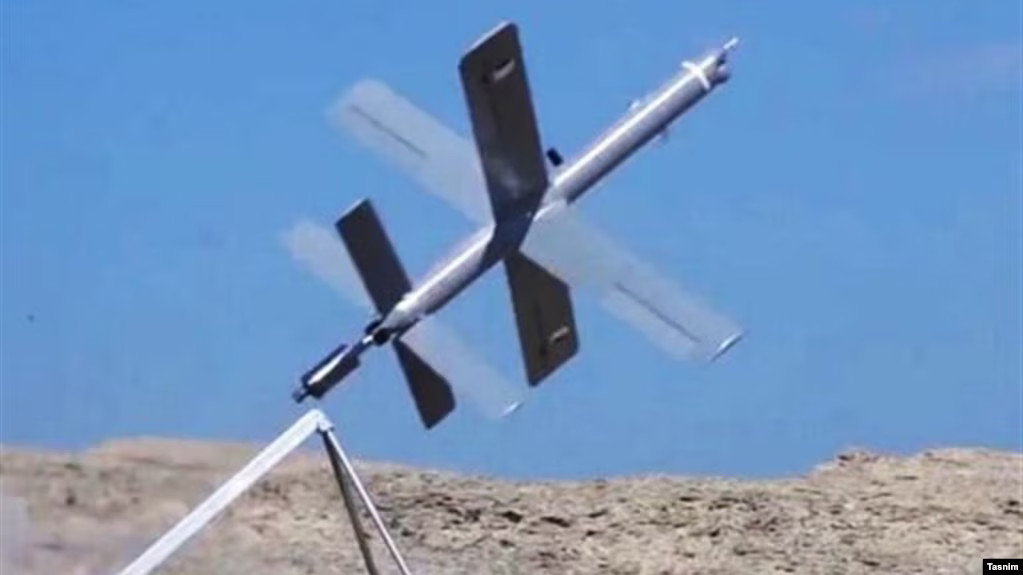
North Korea also has a very aggressive espionage program focused on stealing foreign defense technological information, through which details about Israeli kamikaze drones could have been obtained. Just last month, the United States, the United Kingdom, and South Korea put out a new joint alert about the activities of a North Korean “state-sponsored cyber group” that “primarily targets defense, aerospace, nuclear, and engineering entities to obtain sensitive and classified technical information and intellectual property to advance the regime’s military and nuclear programs and ambitions.”
The public debut of North Korean lookalikes of the U.S. MQ-9 Reaper and RQ-4 Global Hawk drones, which you can read more about here, prompted similar questions about whether espionage and/or Iranian connections have contributed to their development.
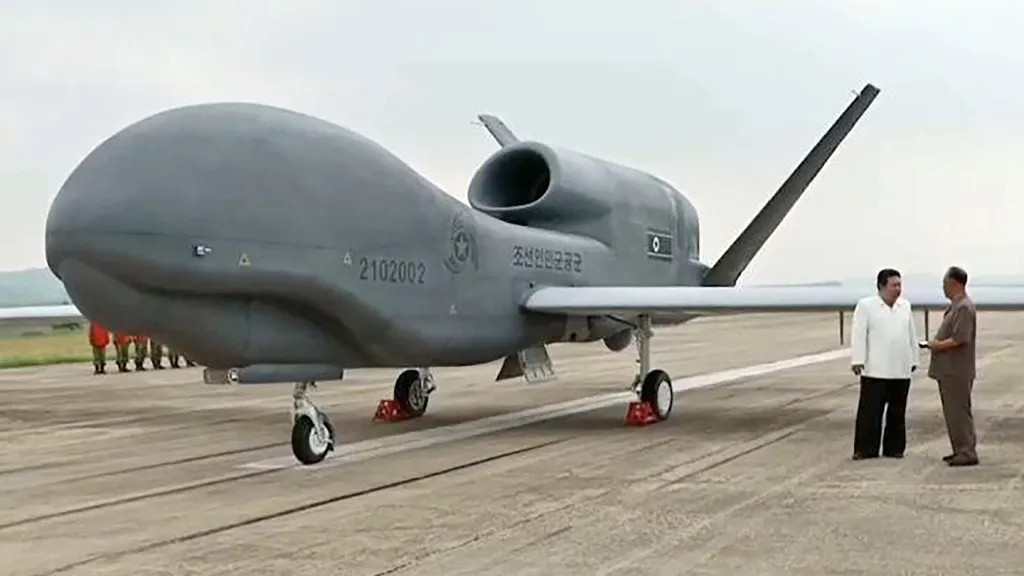
What degree of capabilities either of the newly revealed North Korean kamikaze drones actually have compared to their Israeli counterparts actually is unclear.
“The drones to be used within different striking ranges are to perform a mission to attack any enemy targets on the ground and in the sea,” according to an article about Kim’s visit to the Drone Institute from the state newspaper Rodong Sinmun. “The drones of various types correctly identified and destroyed the designated targets after flying along different preset routes.”
The latter comment might point to some degree of basic automated target detection and engagement, but this could be limited to detecting radar emissions along a pre-planned route, or some rudimentary form of visual target recognition. The application of artificial intelligence in this will soon proliferate to give these types of drones robust automated target recognition capabilities, but it’s unlikely North Korea possesses this at this time.
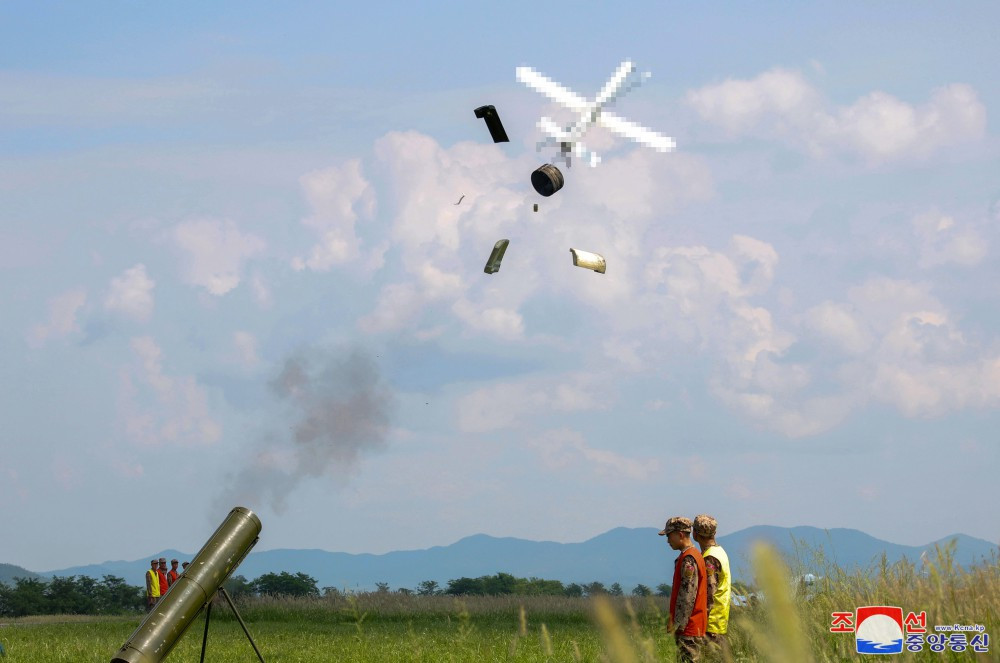
Still, the kamikaze drones could offer North Korean forces a valuable lower-cost option for increasing their overall capacity to attack enemy forces along the front lines and potentially deeper behind them. One of the images from North Korean state media showed the Hero-400-like design diving down on a mock South Korean main battle tank, underscoring one of the main use cases for munitions like this in a frontline tactical setting. As already noted, the Harop was originally designed to help neutralize air defenses, but is also combat-proven against artillery pieces and other enemy forces. Against targets at sea, even smaller kamikaze drones could cause significant damage, especially by targeting radars, communications antennas, and other critical systems, which could even result in mission kills against larger vessels.
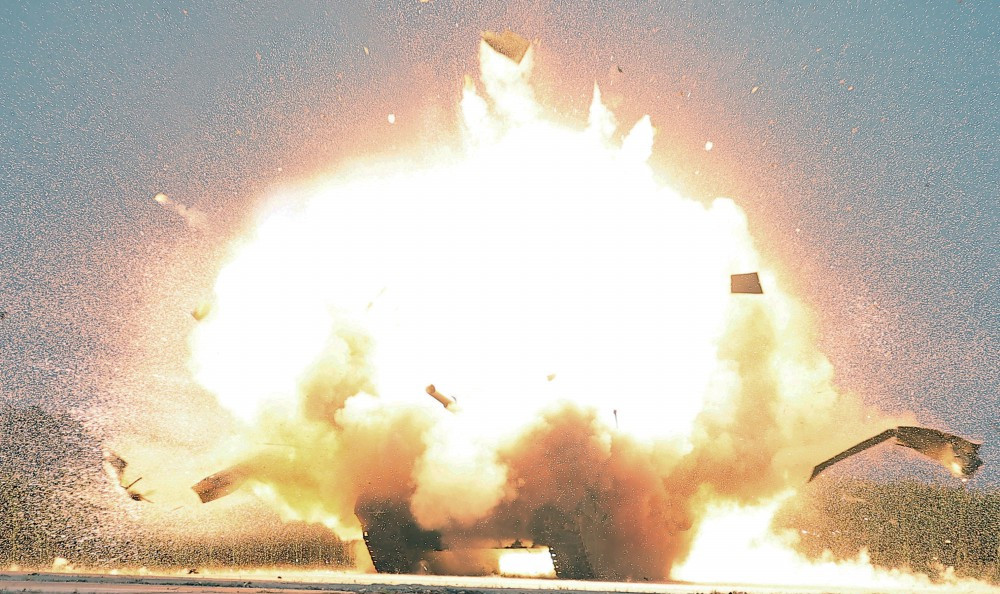
Even just in the context of line-of-sight tactical operations, both of North Korea’s kamikaze munitions would be ideally suited for combat around the Demilitarized Zone (DMZ). The Harop-like design might also be used to help wreak havoc on fixed installations across South Korea in the open phase of a major conflict on the Peninsula.
“Developing different types of drones and steadily increasing their combat performance take an important share in preparing for a war in view of the trend of world military science and combat experience on battlefields, Kim Jong Un said, adding that it is necessary to develop and produce more suicide drones of various types to be used in tactical infantry and special operation units, as well as strategic reconnaissance and multi-purpose attack drones,” per Rodong Sinmun‘s report.
Though kamikaze drones are not new, their value has now been made fully clear by their regular use on both sides in the ongoing war in Ukraine, as well as by Iran and its proxies throughout the Middle East, including in attacks on Israel and ships in and around the Red Sea. Various tiers of armed drones, including smaller weaponized types designs to drop munitions, are becoming a more ubiquitous fixture in general in conflicts large and small.
North Korea’s own drone incursions over the South in recent years, as well as more recent harassment involving hordes of balloons carrying human waste and other detritus, have further highlighted the very real and diverse threats that large groups of uncrewed aerial systems can pose. Small drones, along with balloons, can be very hard to detect and track, posing additional challenges for defenders.
North Korea could well seek to export its new kamikaze drones, especially to countries like Russia that have limited alternative options to purchase those capabilities due to international sanctions. Global demand for munitions like this is only set to grow.
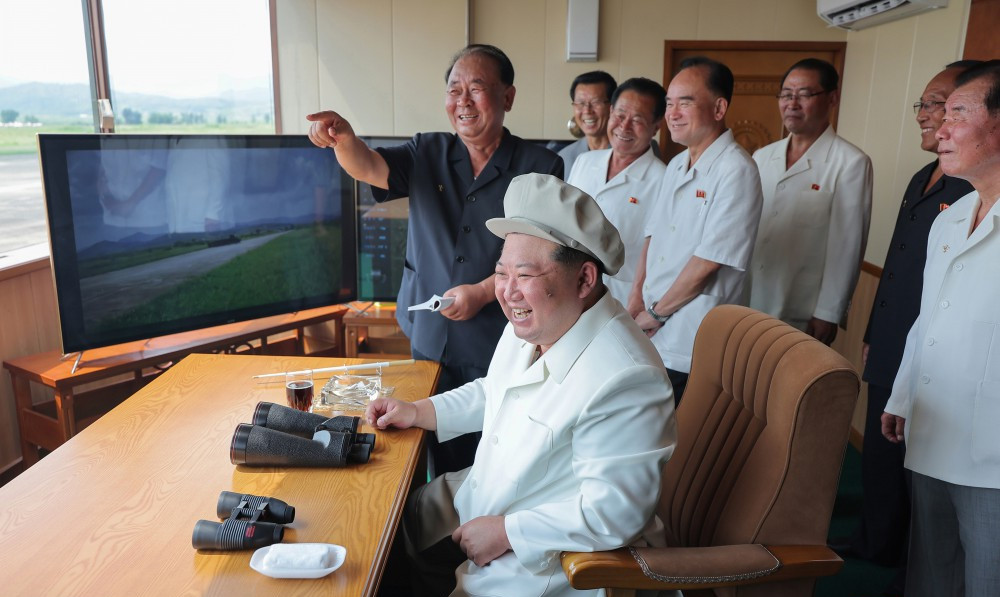
Overall, the North Korean regime has clear ambitions to continue expanding its capabilities and capacity to develop and produce more advanced weapon systems for its own use and potential sale abroad. The new kamikaze drones are just the latest example of these growing efforts.
Contact the author: joe@twz.com
